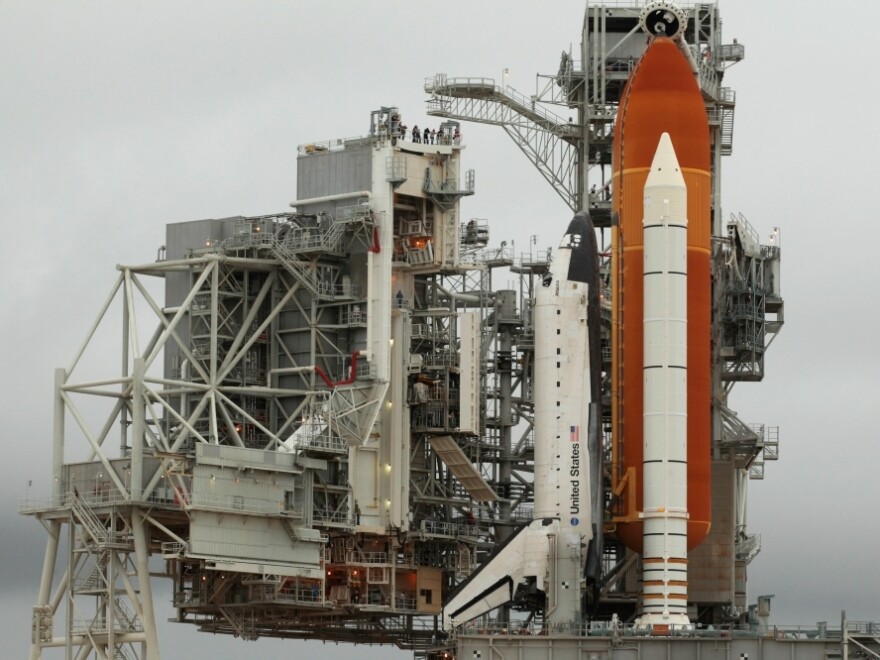Back in 1972 the library in my hometown wasn't very big. But its size didn't matter much to my 10-year-old sensibilities. That was the year I discovered their collection on the U.S. space program. Those few books where big enough to help change my life.
I spent the whole summer poring over images taken by NASA astronauts and space probes. I decided one day, no matter what, I was going to be a scientist too.
That experience turns out to be almost universal for the last three generations of U.S. scientists.
Recently, I've been asking astronomers what inspired them as kids. The answers they give me are all the same. From graduate students to full professors, their first scientific inspiration was the U.S. space program.
If the researchers are older, their eyes light up with memories of watching John Glenn stuffed into a tiny Mercury capsule getting blown into Earth-orbit or seeing the first grainy close up images of Mars beamed back from Mariner 4's 1965 flyby of the red planet. If they are younger, their voices quicken with memories of shuttle astronauts on heroically long spacewalks repairing the wounded Hubble Space Telescope. Always it was the U.S. space program that lit a fire in their kid imaginations and launched them onto scientific trajectories.
This effect isn't limited to astronomers. Dig below the surface of many scientifically trained American adults and you'll find a bunch of kids who caught the science bug from the U.S. Space Program.
So what happens now? Today is the last shuttle launch. We're facing a years-long gap before NASA can put its own astronauts into space. Without the roar of space shuttle launches, are we facing an "Inspiration Gap" too? What's going inspire the next generation of students to a life in science?
Reorienting a space program drifting from lack of clear direction and a lack of funds is the right thing to do. So is supporting the fledging private space industry. But with this gap we could easily forget our larger ambitions for the rest of the solar system. Real-world budget pressures might defer the truly thrilling goals — like seeing human beings clamor over the red hills of Mars — forever.
The loss of that dream would feel terrible for the 10-year-old I was all those years ago. More importantly, it would be a terrible loss for all the 10-year-olds dreaming now of exploration and science. And for a nation that needs science and scientists to survive, it would the most terrible loss of all.
Inspiration is difficult to measure and even more difficult to price. But, as I have seen, it's the root of our excellence in science.
Right now there is frozen moon called Europa orbiting Jupiter. It has a surface of ice that is miles thick. Below the ice is a liquid ocean that goes even deeper. Who knows what unimagined ecosystems might live in those oceans. Someday, somebody who was inspired now as kid is going to wander those frozen plains and drill down to explore those oceans. If we are smart in our choices then those kids could still be our own.
Copyright 2020 NPR. To see more, visit https://www.npr.org. 9(MDAxNDQ2NDAxMDEyNzU2NzM2ODA3ZGI1ZA001))



